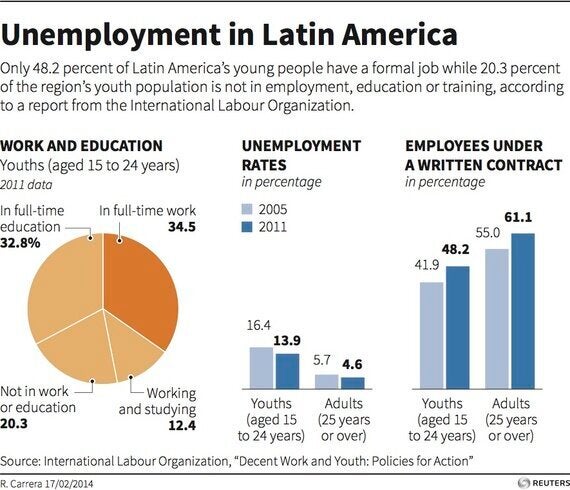In the past five years, the global economy has experienced some of the most phenomenal uncertainties in its history. Yet we are already on the path to recovery. If you look at global trends between 2008 and 2013, it's easy to see the world is once again becoming a busy producer of goods. Exports are on the rise, and with them global GDP indicators.
But all this productivity-driven growth comes at the expense of direct investment across national borders (FDI), which is shrinking. Foreign investment may be playing an important role in contributing to national GDPs, but the inflow of capital has been negative. Countries around the world are experiencing losses - with the exception of Africa, which is gearing up for significant economic growth in the years to come and Latin America, where a timid investment in Colombia, Brazil, Chile and Panama, represented an encouraging note of hope for the continent, which has also experienced more dramatic imbalances, in Argentina and Venezuela.
The lack of an incisive incoming capital reveals a disconnect between investments and the real economy. The consequence is fewer high-end job opportunities and more labour-intensive jobs aimed at a less skilled workforce. Governments are subsidizing low-end jobs at the expense of genuinely value-creating businesses and this particularly true in Latin America, where the export of commodities is the prevailing activity for many local economies. Skilled workers are becoming unemployed as the economy fails to provide them with suitable jobs. This is a recipe for disaster, given that the only way we can achieve real social and economic progress is by raising our productivity.

Whereas the economic recovery in Latin America has brought jobs to workers in the region, the resulting improved social and labor conditions do not appear to have fully benefited young people. The ratio of youth to adult unemployment rate was 2.5 in 2000. Recently, it has grown to about 2.8. Value of 3.0 or above appeared to be common in Brazil in recent years. Perhaps more worrying is that amount of education does not associate with employment. In countries like Argentina and Chile, young people with secondary education made up of half the number of unemployed youth. While the numbers are still far from being worrisome, a current trend is in place.
Moreover, some 25 percent of the unemployed youth in the region were neither studying nor working.They are particularly at risk of labor market and social exclusion because they failed to invest in future employability. So, even if the region's economy continues to expand, unemployment will only get worse. At the same time, we, regardless of which countries, regions, markets and democracies, whether old or new, do not have a solution - certainly not a universal one - to tackle this problem.
If the above presents a picture of private-sector growth, what about the Latin American governments? How are they coping with the challenges of the 21st century?
So far, they have reacted to increased socio-economic pressure by lowering interest rates and implementing austerity measures, but all of this comes at a cost: more pressure on the middle class. The middle class is particularly important to Latin America because only until recently, the percentage of Latin American families that can be considered to be middle class is the same as those to be poor (about 30% of the population each). But if the situation of the world economy continues to deteriorate, this middle class could be squeezed out of their newly achieved status. This is also the case of a country like Chile, which enjoys the highest GDP per capita ($15000) and not long ago enviable pension system, (inspired by the laborious work of the Chicago Boys), which has shown first signs of infrastructural weakness, especially for the most senior group of its working population.
A further squeeze could also come from the lack of innovation, investment and skilled jobs on one side, and harsher cuts to public spending and the prospect of higher borrowing costs on the other. Inefficiency has crept into the economy, and with it the threat of social instability, which fuels populist movements in the whole region.
In the face of ever-rising public debt, several national governments have been pursuing a series of privatizations. While this decision may create liquidity in the short term, it could prove detrimental in the long run, as state assets become private undertakings with the potential to fail.
Not all is lost, however. The dynamic but fragmented Latin American economies may still find a way to adapt to its new circumstances- If capable of migrating their value chain to a higher efficiency model. Young and aspirational Latin American population could be the antidote to our poisoned economic systems and demographics.
If governments and the private sector could coordinate their efforts to capitalize on this overlooked generation, everyone would benefit. It's not simply about boosting entrepreneurship or even innovation-driven start-ups; it's about allowing young people a stake in our collective future by respecting their abilities, giving them a say, encouraging them to vote, and providing them with quality education and the right training. Only this can make them feel less disowned and part of a more relevant Latin American's footprint.
To do this, though, we need a change of culture; a little imagination, a tiny bit of decency. Quite simply, we need governments, companies - and people - to behave differently and stop thinking like colonies and start acting like global players.
N.B. This research is conducted with Dr. Terence Tse
